-
EXECUTIVE SUMMARY
-
Market Overview
-
Key Findings
-
Market Segmentation
-
Competitive Landscape
-
Challenges and Opportunities
-
Future Outlook
-
MARKET INTRODUCTION
-
Definition
-
Scope of the study
- Research Objective
- Assumption
- Limitations
-
RESEARCH METHODOLOGY
-
Overview
-
Data Mining
-
Secondary Research
-
Primary Research
- Primary Interviews and Information Gathering Process
- Breakdown of Primary Respondents
-
Forecasting Model
-
Market Size Estimation
- Bottom-Up Approach
- Top-Down Approach
-
Data Triangulation
-
Validation
-
MARKET DYNAMICS
-
Overview
-
Drivers
-
Restraints
-
Opportunities
-
MARKET FACTOR ANALYSIS
-
Value chain Analysis
-
Porter''s Five Forces Analysis
- Bargaining Power of Suppliers
- Bargaining Power of Buyers
- Threat of New Entrants
- Threat of Substitutes
- Intensity of Rivalry
-
COVID-19 Impact Analysis
- Market Impact Analysis
- Regional Impact
- Opportunity and Threat Analysis
-
MOTOR INSURANCE MARKET, BY COVERAGE TYPE (USD BILLION)
-
Comprehensive
-
Third Party Liability
-
Collision
-
Personal Injury Protection
-
MOTOR INSURANCE MARKET, BY VEHICLE TYPE (USD BILLION)
-
Passenger Cars
-
Commercial Vehicles
-
Motorcycles
-
Electric Vehicles
-
MOTOR INSURANCE MARKET, BY DISTRIBUTION CHANNEL (USD BILLION)
-
Direct Sales
-
Brokers
-
Online Platforms
-
MOTOR INSURANCE MARKET, BY CUSTOMER TYPE (USD BILLION)
-
Individual Customers
-
Corporate Customers
-
MOTOR INSURANCE MARKET, BY REGIONAL (USD BILLION)
-
North America
- US
- Canada
-
Europe
- Germany
- UK
- France
- Russia
- Italy
- Spain
- Rest of Europe
-
APAC
- China
- India
- Japan
- South Korea
- Malaysia
- Thailand
- Indonesia
- Rest of APAC
-
South America
- Brazil
- Mexico
- Argentina
- Rest of South America
-
MEA
- GCC Countries
- South Africa
- Rest of MEA
-
COMPETITIVE LANDSCAPE
-
Overview
-
Competitive Analysis
-
Market share Analysis
-
Major Growth Strategy in the Motor Insurance Market
-
Competitive Benchmarking
-
Leading Players in Terms of Number of Developments in the Motor Insurance Market
-
Key developments and growth strategies
- New Product Launch/Service Deployment
- Merger & Acquisitions
- Joint Ventures
-
Major Players Financial Matrix
- Sales and Operating Income
- Major Players R&D Expenditure. 2023
-
COMPANY PROFILES
-
Farmers Insurance
- Financial Overview
- Products Offered
- Key Developments
- SWOT Analysis
- Key Strategies
-
Liberty Mutual
- Financial Overview
- Products Offered
- Key Developments
- SWOT Analysis
- Key Strategies
-
Mapfre
- Financial Overview
- Products Offered
- Key Developments
- SWOT Analysis
- Key Strategies
-
Tokio Marine
- Financial Overview
- Products Offered
- Key Developments
- SWOT Analysis
- Key Strategies
-
State Farm
- Financial Overview
- Products Offered
- Key Developments
- SWOT Analysis
- Key Strategies
-
Nationwide Mutual Insurance
- Financial Overview
- Products Offered
- Key Developments
- SWOT Analysis
- Key Strategies
-
AIG
- Financial Overview
- Products Offered
- Key Developments
- SWOT Analysis
- Key Strategies
-
Berkshire Hathaway
- Financial Overview
- Products Offered
- Key Developments
- SWOT Analysis
- Key Strategies
-
Generali
- Financial Overview
- Products Offered
- Key Developments
- SWOT Analysis
- Key Strategies
-
Geico
- Financial Overview
- Products Offered
- Key Developments
- SWOT Analysis
- Key Strategies
-
Zurich Insurance
- Financial Overview
- Products Offered
- Key Developments
- SWOT Analysis
- Key Strategies
-
Allstate
- Financial Overview
- Products Offered
- Key Developments
- SWOT Analysis
- Key Strategies
-
Travelers
- Financial Overview
- Products Offered
- Key Developments
- SWOT Analysis
- Key Strategies
-
Progressive
- Financial Overview
- Products Offered
- Key Developments
- SWOT Analysis
- Key Strategies
-
AXA
- Financial Overview
- Products Offered
- Key Developments
- SWOT Analysis
- Key Strategies
-
APPENDIX
-
References
-
Related Reports
-
LIST OF TABLES
-
LIST OF ASSUMPTIONS
-
NORTH AMERICA MOTOR INSURANCE MARKET SIZE ESTIMATES & FORECAST, BY COVERAGE TYPE, 2019-2035 (USD BILLIONS)
-
NORTH AMERICA MOTOR INSURANCE MARKET SIZE ESTIMATES & FORECAST, BY VEHICLE TYPE, 2019-2035 (USD BILLIONS)
-
NORTH AMERICA MOTOR INSURANCE MARKET SIZE ESTIMATES & FORECAST, BY DISTRIBUTION CHANNEL, 2019-2035 (USD BILLIONS)
-
NORTH AMERICA MOTOR INSURANCE MARKET SIZE ESTIMATES & FORECAST, BY CUSTOMER TYPE, 2019-2035 (USD BILLIONS)
-
NORTH AMERICA MOTOR INSURANCE MARKET SIZE ESTIMATES & FORECAST, BY REGIONAL, 2019-2035 (USD BILLIONS)
-
US MOTOR INSURANCE MARKET SIZE ESTIMATES & FORECAST, BY COVERAGE TYPE, 2019-2035 (USD BILLIONS)
-
US MOTOR INSURANCE MARKET SIZE ESTIMATES & FORECAST, BY VEHICLE TYPE, 2019-2035 (USD BILLIONS)
-
US MOTOR INSURANCE MARKET SIZE ESTIMATES & FORECAST, BY DISTRIBUTION CHANNEL, 2019-2035 (USD BILLIONS)
-
US MOTOR INSURANCE MARKET SIZE ESTIMATES & FORECAST, BY CUSTOMER TYPE, 2019-2035 (USD BILLIONS)
-
US MOTOR INSURANCE MARKET SIZE ESTIMATES & FORECAST, BY REGIONAL, 2019-2035 (USD BILLIONS)
-
CANADA MOTOR INSURANCE MARKET SIZE ESTIMATES & FORECAST, BY COVERAGE TYPE, 2019-2035 (USD BILLIONS)
-
CANADA MOTOR INSURANCE MARKET SIZE ESTIMATES & FORECAST, BY VEHICLE TYPE, 2019-2035 (USD BILLIONS)
-
CANADA MOTOR INSURANCE MARKET SIZE ESTIMATES & FORECAST, BY DISTRIBUTION CHANNEL, 2019-2035 (USD BILLIONS)
-
CANADA MOTOR INSURANCE MARKET SIZE ESTIMATES & FORECAST, BY CUSTOMER TYPE, 2019-2035 (USD BILLIONS)
-
CANADA MOTOR INSURANCE MARKET SIZE ESTIMATES & FORECAST, BY REGIONAL, 2019-2035 (USD BILLIONS)
-
EUROPE MOTOR INSURANCE MARKET SIZE ESTIMATES & FORECAST, BY COVERAGE TYPE, 2019-2035 (USD BILLIONS)
-
EUROPE MOTOR INSURANCE MARKET SIZE ESTIMATES & FORECAST, BY VEHICLE TYPE, 2019-2035 (USD BILLIONS)
-
EUROPE MOTOR INSURANCE MARKET SIZE ESTIMATES & FORECAST, BY DISTRIBUTION CHANNEL, 2019-2035 (USD BILLIONS)
-
EUROPE MOTOR INSURANCE MARKET SIZE ESTIMATES & FORECAST, BY CUSTOMER TYPE, 2019-2035 (USD BILLIONS)
-
EUROPE MOTOR INSURANCE MARKET SIZE ESTIMATES & FORECAST, BY REGIONAL, 2019-2035 (USD BILLIONS)
-
GERMANY MOTOR INSURANCE MARKET SIZE ESTIMATES & FORECAST, BY COVERAGE TYPE, 2019-2035 (USD BILLIONS)
-
GERMANY MOTOR INSURANCE MARKET SIZE ESTIMATES & FORECAST, BY VEHICLE TYPE, 2019-2035 (USD BILLIONS)
-
GERMANY MOTOR INSURANCE MARKET SIZE ESTIMATES & FORECAST, BY DISTRIBUTION CHANNEL, 2019-2035 (USD BILLIONS)
-
GERMANY MOTOR INSURANCE MARKET SIZE ESTIMATES & FORECAST, BY CUSTOMER TYPE, 2019-2035 (USD BILLIONS)
-
GERMANY MOTOR INSURANCE MARKET SIZE ESTIMATES & FORECAST, BY REGIONAL, 2019-2035 (USD BILLIONS)
-
UK MOTOR INSURANCE MARKET SIZE ESTIMATES & FORECAST, BY COVERAGE TYPE, 2019-2035 (USD BILLIONS)
-
UK MOTOR INSURANCE MARKET SIZE ESTIMATES & FORECAST, BY VEHICLE TYPE, 2019-2035 (USD BILLIONS)
-
UK MOTOR INSURANCE MARKET SIZE ESTIMATES & FORECAST, BY DISTRIBUTION CHANNEL, 2019-2035 (USD BILLIONS)
-
UK MOTOR INSURANCE MARKET SIZE ESTIMATES & FORECAST, BY CUSTOMER TYPE, 2019-2035 (USD BILLIONS)
-
UK MOTOR INSURANCE MARKET SIZE ESTIMATES & FORECAST, BY REGIONAL, 2019-2035 (USD BILLIONS)
-
FRANCE MOTOR INSURANCE MARKET SIZE ESTIMATES & FORECAST, BY COVERAGE TYPE, 2019-2035 (USD BILLIONS)
-
FRANCE MOTOR INSURANCE MARKET SIZE ESTIMATES & FORECAST, BY VEHICLE TYPE, 2019-2035 (USD BILLIONS)
-
FRANCE MOTOR INSURANCE MARKET SIZE ESTIMATES & FORECAST, BY DISTRIBUTION CHANNEL, 2019-2035 (USD BILLIONS)
-
FRANCE MOTOR INSURANCE MARKET SIZE ESTIMATES & FORECAST, BY CUSTOMER TYPE, 2019-2035 (USD BILLIONS)
-
FRANCE MOTOR INSURANCE MARKET SIZE ESTIMATES & FORECAST, BY REGIONAL, 2019-2035 (USD BILLIONS)
-
RUSSIA MOTOR INSURANCE MARKET SIZE ESTIMATES & FORECAST, BY COVERAGE TYPE, 2019-2035 (USD BILLIONS)
-
RUSSIA MOTOR INSURANCE MARKET SIZE ESTIMATES & FORECAST, BY VEHICLE TYPE, 2019-2035 (USD BILLIONS)
-
RUSSIA MOTOR INSURANCE MARKET SIZE ESTIMATES & FORECAST, BY DISTRIBUTION CHANNEL, 2019-2035 (USD BILLIONS)
-
RUSSIA MOTOR INSURANCE MARKET SIZE ESTIMATES & FORECAST, BY CUSTOMER TYPE, 2019-2035 (USD BILLIONS)
-
RUSSIA MOTOR INSURANCE MARKET SIZE ESTIMATES & FORECAST, BY REGIONAL, 2019-2035 (USD BILLIONS)
-
ITALY MOTOR INSURANCE MARKET SIZE ESTIMATES & FORECAST, BY COVERAGE TYPE, 2019-2035 (USD BILLIONS)
-
ITALY MOTOR INSURANCE MARKET SIZE ESTIMATES & FORECAST, BY VEHICLE TYPE, 2019-2035 (USD BILLIONS)
-
ITALY MOTOR INSURANCE MARKET SIZE ESTIMATES & FORECAST, BY DISTRIBUTION CHANNEL, 2019-2035 (USD BILLIONS)
-
ITALY MOTOR INSURANCE MARKET SIZE ESTIMATES & FORECAST, BY CUSTOMER TYPE, 2019-2035 (USD BILLIONS)
-
ITALY MOTOR INSURANCE MARKET SIZE ESTIMATES & FORECAST, BY REGIONAL, 2019-2035 (USD BILLIONS)
-
SPAIN MOTOR INSURANCE MARKET SIZE ESTIMATES & FORECAST, BY COVERAGE TYPE, 2019-2035 (USD BILLIONS)
-
SPAIN MOTOR INSURANCE MARKET SIZE ESTIMATES & FORECAST, BY VEHICLE TYPE, 2019-2035 (USD BILLIONS)
-
SPAIN MOTOR INSURANCE MARKET SIZE ESTIMATES & FORECAST, BY DISTRIBUTION CHANNEL, 2019-2035 (USD BILLIONS)
-
SPAIN MOTOR INSURANCE MARKET SIZE ESTIMATES & FORECAST, BY CUSTOMER TYPE, 2019-2035 (USD BILLIONS)
-
SPAIN MOTOR INSURANCE MARKET SIZE ESTIMATES & FORECAST, BY REGIONAL, 2019-2035 (USD BILLIONS)
-
REST OF EUROPE MOTOR INSURANCE MARKET SIZE ESTIMATES & FORECAST, BY COVERAGE TYPE, 2019-2035 (USD BILLIONS)
-
REST OF EUROPE MOTOR INSURANCE MARKET SIZE ESTIMATES & FORECAST, BY VEHICLE TYPE, 2019-2035 (USD BILLIONS)
-
REST OF EUROPE MOTOR INSURANCE MARKET SIZE ESTIMATES & FORECAST, BY DISTRIBUTION CHANNEL, 2019-2035 (USD BILLIONS)
-
REST OF EUROPE MOTOR INSURANCE MARKET SIZE ESTIMATES & FORECAST, BY CUSTOMER TYPE, 2019-2035 (USD BILLIONS)
-
REST OF EUROPE MOTOR INSURANCE MARKET SIZE ESTIMATES & FORECAST, BY REGIONAL, 2019-2035 (USD BILLIONS)
-
APAC MOTOR INSURANCE MARKET SIZE ESTIMATES & FORECAST, BY COVERAGE TYPE, 2019-2035 (USD BILLIONS)
-
APAC MOTOR INSURANCE MARKET SIZE ESTIMATES & FORECAST, BY VEHICLE TYPE, 2019-2035 (USD BILLIONS)
-
APAC MOTOR INSURANCE MARKET SIZE ESTIMATES & FORECAST, BY DISTRIBUTION CHANNEL, 2019-2035 (USD BILLIONS)
-
APAC MOTOR INSURANCE MARKET SIZE ESTIMATES & FORECAST, BY CUSTOMER TYPE, 2019-2035 (USD BILLIONS)
-
APAC MOTOR INSURANCE MARKET SIZE ESTIMATES & FORECAST, BY REGIONAL, 2019-2035 (USD BILLIONS)
-
CHINA MOTOR INSURANCE MARKET SIZE ESTIMATES & FORECAST, BY COVERAGE TYPE, 2019-2035 (USD BILLIONS)
-
CHINA MOTOR INSURANCE MARKET SIZE ESTIMATES & FORECAST, BY VEHICLE TYPE, 2019-2035 (USD BILLIONS)
-
CHINA MOTOR INSURANCE MARKET SIZE ESTIMATES & FORECAST, BY DISTRIBUTION CHANNEL, 2019-2035 (USD BILLIONS)
-
CHINA MOTOR INSURANCE MARKET SIZE ESTIMATES & FORECAST, BY CUSTOMER TYPE, 2019-2035 (USD BILLIONS)
-
CHINA MOTOR INSURANCE MARKET SIZE ESTIMATES & FORECAST, BY REGIONAL, 2019-2035 (USD BILLIONS)
-
INDIA MOTOR INSURANCE MARKET SIZE ESTIMATES & FORECAST, BY COVERAGE TYPE, 2019-2035 (USD BILLIONS)
-
INDIA MOTOR INSURANCE MARKET SIZE ESTIMATES & FORECAST, BY VEHICLE TYPE, 2019-2035 (USD BILLIONS)
-
INDIA MOTOR INSURANCE MARKET SIZE ESTIMATES & FORECAST, BY DISTRIBUTION CHANNEL, 2019-2035 (USD BILLIONS)
-
INDIA MOTOR INSURANCE MARKET SIZE ESTIMATES & FORECAST, BY CUSTOMER TYPE, 2019-2035 (USD BILLIONS)
-
INDIA MOTOR INSURANCE MARKET SIZE ESTIMATES & FORECAST, BY REGIONAL, 2019-2035 (USD BILLIONS)
-
JAPAN MOTOR INSURANCE MARKET SIZE ESTIMATES & FORECAST, BY COVERAGE TYPE, 2019-2035 (USD BILLIONS)
-
JAPAN MOTOR INSURANCE MARKET SIZE ESTIMATES & FORECAST, BY VEHICLE TYPE, 2019-2035 (USD BILLIONS)
-
JAPAN MOTOR INSURANCE MARKET SIZE ESTIMATES & FORECAST, BY DISTRIBUTION CHANNEL, 2019-2035 (USD BILLIONS)
-
JAPAN MOTOR INSURANCE MARKET SIZE ESTIMATES & FORECAST, BY CUSTOMER TYPE, 2019-2035 (USD BILLIONS)
-
JAPAN MOTOR INSURANCE MARKET SIZE ESTIMATES & FORECAST, BY REGIONAL, 2019-2035 (USD BILLIONS)
-
SOUTH KOREA MOTOR INSURANCE MARKET SIZE ESTIMATES & FORECAST, BY COVERAGE TYPE, 2019-2035 (USD BILLIONS)
-
SOUTH KOREA MOTOR INSURANCE MARKET SIZE ESTIMATES & FORECAST, BY VEHICLE TYPE, 2019-2035 (USD BILLIONS)
-
SOUTH KOREA MOTOR INSURANCE MARKET SIZE ESTIMATES & FORECAST, BY DISTRIBUTION CHANNEL, 2019-2035 (USD BILLIONS)
-
SOUTH KOREA MOTOR INSURANCE MARKET SIZE ESTIMATES & FORECAST, BY CUSTOMER TYPE, 2019-2035 (USD BILLIONS)
-
SOUTH KOREA MOTOR INSURANCE MARKET SIZE ESTIMATES & FORECAST, BY REGIONAL, 2019-2035 (USD BILLIONS)
-
MALAYSIA MOTOR INSURANCE MARKET SIZE ESTIMATES & FORECAST, BY COVERAGE TYPE, 2019-2035 (USD BILLIONS)
-
MALAYSIA MOTOR INSURANCE MARKET SIZE ESTIMATES & FORECAST, BY VEHICLE TYPE, 2019-2035 (USD BILLIONS)
-
MALAYSIA MOTOR INSURANCE MARKET SIZE ESTIMATES & FORECAST, BY DISTRIBUTION CHANNEL, 2019-2035 (USD BILLIONS)
-
MALAYSIA MOTOR INSURANCE MARKET SIZE ESTIMATES & FORECAST, BY CUSTOMER TYPE, 2019-2035 (USD BILLIONS)
-
MALAYSIA MOTOR INSURANCE MARKET SIZE ESTIMATES & FORECAST, BY REGIONAL, 2019-2035 (USD BILLIONS)
-
THAILAND MOTOR INSURANCE MARKET SIZE ESTIMATES & FORECAST, BY COVERAGE TYPE, 2019-2035 (USD BILLIONS)
-
THAILAND MOTOR INSURANCE MARKET SIZE ESTIMATES & FORECAST, BY VEHICLE TYPE, 2019-2035 (USD BILLIONS)
-
THAILAND MOTOR INSURANCE MARKET SIZE ESTIMATES & FORECAST, BY DISTRIBUTION CHANNEL, 2019-2035 (USD BILLIONS)
-
THAILAND MOTOR INSURANCE MARKET SIZE ESTIMATES & FORECAST, BY CUSTOMER TYPE, 2019-2035 (USD BILLIONS)
-
THAILAND MOTOR INSURANCE MARKET SIZE ESTIMATES & FORECAST, BY REGIONAL, 2019-2035 (USD BILLIONS)
-
INDONESIA MOTOR INSURANCE MARKET SIZE ESTIMATES & FORECAST, BY COVERAGE TYPE, 2019-2035 (USD BILLIONS)
-
INDONESIA MOTOR INSURANCE MARKET SIZE ESTIMATES & FORECAST, BY VEHICLE TYPE, 2019-2035 (USD BILLIONS)
-
INDONESIA MOTOR INSURANCE MARKET SIZE ESTIMATES & FORECAST, BY DISTRIBUTION CHANNEL, 2019-2035 (USD BILLIONS)
-
INDONESIA MOTOR INSURANCE MARKET SIZE ESTIMATES & FORECAST, BY CUSTOMER TYPE, 2019-2035 (USD BILLIONS)
-
INDONESIA MOTOR INSURANCE MARKET SIZE ESTIMATES & FORECAST, BY REGIONAL, 2019-2035 (USD BILLIONS)
-
REST OF APAC MOTOR INSURANCE MARKET SIZE ESTIMATES & FORECAST, BY COVERAGE TYPE, 2019-2035 (USD BILLIONS)
-
REST OF APAC MOTOR INSURANCE MARKET SIZE ESTIMATES & FORECAST, BY VEHICLE TYPE, 2019-2035 (USD BILLIONS)
-
REST OF APAC MOTOR INSURANCE MARKET SIZE ESTIMATES & FORECAST, BY DISTRIBUTION CHANNEL, 2019-2035 (USD BILLIONS)
-
REST OF APAC MOTOR INSURANCE MARKET SIZE ESTIMATES & FORECAST, BY CUSTOMER TYPE, 2019-2035 (USD BILLIONS)
-
REST OF APAC MOTOR INSURANCE MARKET SIZE ESTIMATES & FORECAST, BY REGIONAL, 2019-2035 (USD BILLIONS)
-
SOUTH AMERICA MOTOR INSURANCE MARKET SIZE ESTIMATES & FORECAST, BY COVERAGE TYPE, 2019-2035 (USD BILLIONS)
-
SOUTH AMERICA MOTOR INSURANCE MARKET SIZE ESTIMATES & FORECAST, BY VEHICLE TYPE, 2019-2035 (USD BILLIONS)
-
SOUTH AMERICA MOTOR INSURANCE MARKET SIZE ESTIMATES & FORECAST, BY DISTRIBUTION CHANNEL, 2019-2035 (USD BILLIONS)
-
SOUTH AMERICA MOTOR INSURANCE MARKET SIZE ESTIMATES & FORECAST, BY CUSTOMER TYPE, 2019-2035 (USD BILLIONS)
-
SOUTH AMERICA MOTOR INSURANCE MARKET SIZE ESTIMATES & FORECAST, BY REGIONAL, 2019-2035 (USD BILLIONS)
-
BRAZIL MOTOR INSURANCE MARKET SIZE ESTIMATES & FORECAST, BY COVERAGE TYPE, 2019-2035 (USD BILLIONS)
-
BRAZIL MOTOR INSURANCE MARKET SIZE ESTIMATES & FORECAST, BY VEHICLE TYPE, 2019-2035 (USD BILLIONS)
-
BRAZIL MOTOR INSURANCE MARKET SIZE ESTIMATES & FORECAST, BY DISTRIBUTION CHANNEL, 2019-2035 (USD BILLIONS)
-
BRAZIL MOTOR INSURANCE MARKET SIZE ESTIMATES & FORECAST, BY CUSTOMER TYPE, 2019-2035 (USD BILLIONS)
-
BRAZIL MOTOR INSURANCE MARKET SIZE ESTIMATES & FORECAST, BY REGIONAL, 2019-2035 (USD BILLIONS)
-
MEXICO MOTOR INSURANCE MARKET SIZE ESTIMATES & FORECAST, BY COVERAGE TYPE, 2019-2035 (USD BILLIONS)
-
MEXICO MOTOR INSURANCE MARKET SIZE ESTIMATES & FORECAST, BY VEHICLE TYPE, 2019-2035 (USD BILLIONS)
-
MEXICO MOTOR INSURANCE MARKET SIZE ESTIMATES & FORECAST, BY DISTRIBUTION CHANNEL, 2019-2035 (USD BILLIONS)
-
MEXICO MOTOR INSURANCE MARKET SIZE ESTIMATES & FORECAST, BY CUSTOMER TYPE, 2019-2035 (USD BILLIONS)
-
MEXICO MOTOR INSURANCE MARKET SIZE ESTIMATES & FORECAST, BY REGIONAL, 2019-2035 (USD BILLIONS)
-
ARGENTINA MOTOR INSURANCE MARKET SIZE ESTIMATES & FORECAST, BY COVERAGE TYPE, 2019-2035 (USD BILLIONS)
-
ARGENTINA MOTOR INSURANCE MARKET SIZE ESTIMATES & FORECAST, BY VEHICLE TYPE, 2019-2035 (USD BILLIONS)
-
ARGENTINA MOTOR INSURANCE MARKET SIZE ESTIMATES & FORECAST, BY DISTRIBUTION CHANNEL, 2019-2035 (USD BILLIONS)
-
ARGENTINA MOTOR INSURANCE MARKET SIZE ESTIMATES & FORECAST, BY CUSTOMER TYPE, 2019-2035 (USD BILLIONS)
-
ARGENTINA MOTOR INSURANCE MARKET SIZE ESTIMATES & FORECAST, BY REGIONAL, 2019-2035 (USD BILLIONS)
-
REST OF SOUTH AMERICA MOTOR INSURANCE MARKET SIZE ESTIMATES & FORECAST, BY COVERAGE TYPE, 2019-2035 (USD BILLIONS)
-
REST OF SOUTH AMERICA MOTOR INSURANCE MARKET SIZE ESTIMATES & FORECAST, BY VEHICLE TYPE, 2019-2035 (USD BILLIONS)
-
REST OF SOUTH AMERICA MOTOR INSURANCE MARKET SIZE ESTIMATES & FORECAST, BY DISTRIBUTION CHANNEL, 2019-2035 (USD BILLIONS)
-
REST OF SOUTH AMERICA MOTOR INSURANCE MARKET SIZE ESTIMATES & FORECAST, BY CUSTOMER TYPE, 2019-2035 (USD BILLIONS)
-
REST OF SOUTH AMERICA MOTOR INSURANCE MARKET SIZE ESTIMATES & FORECAST, BY REGIONAL, 2019-2035 (USD BILLIONS)
-
MEA MOTOR INSURANCE MARKET SIZE ESTIMATES & FORECAST, BY COVERAGE TYPE, 2019-2035 (USD BILLIONS)
-
MEA MOTOR INSURANCE MARKET SIZE ESTIMATES & FORECAST, BY VEHICLE TYPE, 2019-2035 (USD BILLIONS)
-
MEA MOTOR INSURANCE MARKET SIZE ESTIMATES & FORECAST, BY DISTRIBUTION CHANNEL, 2019-2035 (USD BILLIONS)
-
MEA MOTOR INSURANCE MARKET SIZE ESTIMATES & FORECAST, BY CUSTOMER TYPE, 2019-2035 (USD BILLIONS)
-
MEA MOTOR INSURANCE MARKET SIZE ESTIMATES & FORECAST, BY REGIONAL, 2019-2035 (USD BILLIONS)
-
GCC COUNTRIES MOTOR INSURANCE MARKET SIZE ESTIMATES & FORECAST, BY COVERAGE TYPE, 2019-2035 (USD BILLIONS)
-
GCC COUNTRIES MOTOR INSURANCE MARKET SIZE ESTIMATES & FORECAST, BY VEHICLE TYPE, 2019-2035 (USD BILLIONS)
-
GCC COUNTRIES MOTOR INSURANCE MARKET SIZE ESTIMATES & FORECAST, BY DISTRIBUTION CHANNEL, 2019-2035 (USD BILLIONS)
-
GCC COUNTRIES MOTOR INSURANCE MARKET SIZE ESTIMATES & FORECAST, BY CUSTOMER TYPE, 2019-2035 (USD BILLIONS)
-
GCC COUNTRIES MOTOR INSURANCE MARKET SIZE ESTIMATES & FORECAST, BY REGIONAL, 2019-2035 (USD BILLIONS)
-
SOUTH AFRICA MOTOR INSURANCE MARKET SIZE ESTIMATES & FORECAST, BY COVERAGE TYPE, 2019-2035 (USD BILLIONS)
-
SOUTH AFRICA MOTOR INSURANCE MARKET SIZE ESTIMATES & FORECAST, BY VEHICLE TYPE, 2019-2035 (USD BILLIONS)
-
SOUTH AFRICA MOTOR INSURANCE MARKET SIZE ESTIMATES & FORECAST, BY DISTRIBUTION CHANNEL, 2019-2035 (USD BILLIONS)
-
SOUTH AFRICA MOTOR INSURANCE MARKET SIZE ESTIMATES & FORECAST, BY CUSTOMER TYPE, 2019-2035 (USD BILLIONS)
-
SOUTH AFRICA MOTOR INSURANCE MARKET SIZE ESTIMATES & FORECAST, BY REGIONAL, 2019-2035 (USD BILLIONS)
-
REST OF MEA MOTOR INSURANCE MARKET SIZE ESTIMATES & FORECAST, BY COVERAGE TYPE, 2019-2035 (USD BILLIONS)
-
REST OF MEA MOTOR INSURANCE MARKET SIZE ESTIMATES & FORECAST, BY VEHICLE TYPE, 2019-2035 (USD BILLIONS)
-
REST OF MEA MOTOR INSURANCE MARKET SIZE ESTIMATES & FORECAST, BY DISTRIBUTION CHANNEL, 2019-2035 (USD BILLIONS)
-
REST OF MEA MOTOR INSURANCE MARKET SIZE ESTIMATES & FORECAST, BY CUSTOMER TYPE, 2019-2035 (USD BILLIONS)
-
REST OF MEA MOTOR INSURANCE MARKET SIZE ESTIMATES & FORECAST, BY REGIONAL, 2019-2035 (USD BILLIONS)
-
PRODUCT LAUNCH/PRODUCT DEVELOPMENT/APPROVAL
-
ACQUISITION/PARTNERSHIP
-
LIST OF FIGURES
-
MARKET SYNOPSIS
-
NORTH AMERICA MOTOR INSURANCE MARKET ANALYSIS
-
US MOTOR INSURANCE MARKET ANALYSIS BY COVERAGE TYPE
-
US MOTOR INSURANCE MARKET ANALYSIS BY VEHICLE TYPE
-
US MOTOR INSURANCE MARKET ANALYSIS BY DISTRIBUTION CHANNEL
-
US MOTOR INSURANCE MARKET ANALYSIS BY CUSTOMER TYPE
-
US MOTOR INSURANCE MARKET ANALYSIS BY REGIONAL
-
CANADA MOTOR INSURANCE MARKET ANALYSIS BY COVERAGE TYPE
-
CANADA MOTOR INSURANCE MARKET ANALYSIS BY VEHICLE TYPE
-
CANADA MOTOR INSURANCE MARKET ANALYSIS BY DISTRIBUTION CHANNEL
-
CANADA MOTOR INSURANCE MARKET ANALYSIS BY CUSTOMER TYPE
-
CANADA MOTOR INSURANCE MARKET ANALYSIS BY REGIONAL
-
EUROPE MOTOR INSURANCE MARKET ANALYSIS
-
GERMANY MOTOR INSURANCE MARKET ANALYSIS BY COVERAGE TYPE
-
GERMANY MOTOR INSURANCE MARKET ANALYSIS BY VEHICLE TYPE
-
GERMANY MOTOR INSURANCE MARKET ANALYSIS BY DISTRIBUTION CHANNEL
-
GERMANY MOTOR INSURANCE MARKET ANALYSIS BY CUSTOMER TYPE
-
GERMANY MOTOR INSURANCE MARKET ANALYSIS BY REGIONAL
-
UK MOTOR INSURANCE MARKET ANALYSIS BY COVERAGE TYPE
-
UK MOTOR INSURANCE MARKET ANALYSIS BY VEHICLE TYPE
-
UK MOTOR INSURANCE MARKET ANALYSIS BY DISTRIBUTION CHANNEL
-
UK MOTOR INSURANCE MARKET ANALYSIS BY CUSTOMER TYPE
-
UK MOTOR INSURANCE MARKET ANALYSIS BY REGIONAL
-
FRANCE MOTOR INSURANCE MARKET ANALYSIS BY COVERAGE TYPE
-
FRANCE MOTOR INSURANCE MARKET ANALYSIS BY VEHICLE TYPE
-
FRANCE MOTOR INSURANCE MARKET ANALYSIS BY DISTRIBUTION CHANNEL
-
FRANCE MOTOR INSURANCE MARKET ANALYSIS BY CUSTOMER TYPE
-
FRANCE MOTOR INSURANCE MARKET ANALYSIS BY REGIONAL
-
RUSSIA MOTOR INSURANCE MARKET ANALYSIS BY COVERAGE TYPE
-
RUSSIA MOTOR INSURANCE MARKET ANALYSIS BY VEHICLE TYPE
-
RUSSIA MOTOR INSURANCE MARKET ANALYSIS BY DISTRIBUTION CHANNEL
-
RUSSIA MOTOR INSURANCE MARKET ANALYSIS BY CUSTOMER TYPE
-
RUSSIA MOTOR INSURANCE MARKET ANALYSIS BY REGIONAL
-
ITALY MOTOR INSURANCE MARKET ANALYSIS BY COVERAGE TYPE
-
ITALY MOTOR INSURANCE MARKET ANALYSIS BY VEHICLE TYPE
-
ITALY MOTOR INSURANCE MARKET ANALYSIS BY DISTRIBUTION CHANNEL
-
ITALY MOTOR INSURANCE MARKET ANALYSIS BY CUSTOMER TYPE
-
ITALY MOTOR INSURANCE MARKET ANALYSIS BY REGIONAL
-
SPAIN MOTOR INSURANCE MARKET ANALYSIS BY COVERAGE TYPE
-
SPAIN MOTOR INSURANCE MARKET ANALYSIS BY VEHICLE TYPE
-
SPAIN MOTOR INSURANCE MARKET ANALYSIS BY DISTRIBUTION CHANNEL
-
SPAIN MOTOR INSURANCE MARKET ANALYSIS BY CUSTOMER TYPE
-
SPAIN MOTOR INSURANCE MARKET ANALYSIS BY REGIONAL
-
REST OF EUROPE MOTOR INSURANCE MARKET ANALYSIS BY COVERAGE TYPE
-
REST OF EUROPE MOTOR INSURANCE MARKET ANALYSIS BY VEHICLE TYPE
-
REST OF EUROPE MOTOR INSURANCE MARKET ANALYSIS BY DISTRIBUTION CHANNEL
-
REST OF EUROPE MOTOR INSURANCE MARKET ANALYSIS BY CUSTOMER TYPE
-
REST OF EUROPE MOTOR INSURANCE MARKET ANALYSIS BY REGIONAL
-
APAC MOTOR INSURANCE MARKET ANALYSIS
-
CHINA MOTOR INSURANCE MARKET ANALYSIS BY COVERAGE TYPE
-
CHINA MOTOR INSURANCE MARKET ANALYSIS BY VEHICLE TYPE
-
CHINA MOTOR INSURANCE MARKET ANALYSIS BY DISTRIBUTION CHANNEL
-
CHINA MOTOR INSURANCE MARKET ANALYSIS BY CUSTOMER TYPE
-
CHINA MOTOR INSURANCE MARKET ANALYSIS BY REGIONAL
-
INDIA MOTOR INSURANCE MARKET ANALYSIS BY COVERAGE TYPE
-
INDIA MOTOR INSURANCE MARKET ANALYSIS BY VEHICLE TYPE
-
INDIA MOTOR INSURANCE MARKET ANALYSIS BY DISTRIBUTION CHANNEL
-
INDIA MOTOR INSURANCE MARKET ANALYSIS BY CUSTOMER TYPE
-
INDIA MOTOR INSURANCE MARKET ANALYSIS BY REGIONAL
-
JAPAN MOTOR INSURANCE MARKET ANALYSIS BY COVERAGE TYPE
-
JAPAN MOTOR INSURANCE MARKET ANALYSIS BY VEHICLE TYPE
-
JAPAN MOTOR INSURANCE MARKET ANALYSIS BY DISTRIBUTION CHANNEL
-
JAPAN MOTOR INSURANCE MARKET ANALYSIS BY CUSTOMER TYPE
-
JAPAN MOTOR INSURANCE MARKET ANALYSIS BY REGIONAL
-
SOUTH KOREA MOTOR INSURANCE MARKET ANALYSIS BY COVERAGE TYPE
-
SOUTH KOREA MOTOR INSURANCE MARKET ANALYSIS BY VEHICLE TYPE
-
SOUTH KOREA MOTOR INSURANCE MARKET ANALYSIS BY DISTRIBUTION CHANNEL
-
SOUTH KOREA MOTOR INSURANCE MARKET ANALYSIS BY CUSTOMER TYPE
-
SOUTH KOREA MOTOR INSURANCE MARKET ANALYSIS BY REGIONAL
-
MALAYSIA MOTOR INSURANCE MARKET ANALYSIS BY COVERAGE TYPE
-
MALAYSIA MOTOR INSURANCE MARKET ANALYSIS BY VEHICLE TYPE
-
MALAYSIA MOTOR INSURANCE MARKET ANALYSIS BY DISTRIBUTION CHANNEL
-
MALAYSIA MOTOR INSURANCE MARKET ANALYSIS BY CUSTOMER TYPE
-
MALAYSIA MOTOR INSURANCE MARKET ANALYSIS BY REGIONAL
-
THAILAND MOTOR INSURANCE MARKET ANALYSIS BY COVERAGE TYPE
-
THAILAND MOTOR INSURANCE MARKET ANALYSIS BY VEHICLE TYPE
-
THAILAND MOTOR INSURANCE MARKET ANALYSIS BY DISTRIBUTION CHANNEL
-
THAILAND MOTOR INSURANCE MARKET ANALYSIS BY CUSTOMER TYPE
-
THAILAND MOTOR INSURANCE MARKET ANALYSIS BY REGIONAL
-
INDONESIA MOTOR INSURANCE MARKET ANALYSIS BY COVERAGE TYPE
-
INDONESIA MOTOR INSURANCE MARKET ANALYSIS BY VEHICLE TYPE
-
INDONESIA MOTOR INSURANCE MARKET ANALYSIS BY DISTRIBUTION CHANNEL
-
INDONESIA MOTOR INSURANCE MARKET ANALYSIS BY CUSTOMER TYPE
-
INDONESIA MOTOR INSURANCE MARKET ANALYSIS BY REGIONAL
-
REST OF APAC MOTOR INSURANCE MARKET ANALYSIS BY COVERAGE TYPE
-
REST OF APAC MOTOR INSURANCE MARKET ANALYSIS BY VEHICLE TYPE
-
REST OF APAC MOTOR INSURANCE MARKET ANALYSIS BY DISTRIBUTION CHANNEL
-
REST OF APAC MOTOR INSURANCE MARKET ANALYSIS BY CUSTOMER TYPE
-
REST OF APAC MOTOR INSURANCE MARKET ANALYSIS BY REGIONAL
-
SOUTH AMERICA MOTOR INSURANCE MARKET ANALYSIS
-
BRAZIL MOTOR INSURANCE MARKET ANALYSIS BY COVERAGE TYPE
-
BRAZIL MOTOR INSURANCE MARKET ANALYSIS BY VEHICLE TYPE
-
BRAZIL MOTOR INSURANCE MARKET ANALYSIS BY DISTRIBUTION CHANNEL
-
BRAZIL MOTOR INSURANCE MARKET ANALYSIS BY CUSTOMER TYPE
-
BRAZIL MOTOR INSURANCE MARKET ANALYSIS BY REGIONAL
-
MEXICO MOTOR INSURANCE MARKET ANALYSIS BY COVERAGE TYPE
-
MEXICO MOTOR INSURANCE MARKET ANALYSIS BY VEHICLE TYPE
-
MEXICO MOTOR INSURANCE MARKET ANALYSIS BY DISTRIBUTION CHANNEL
-
MEXICO MOTOR INSURANCE MARKET ANALYSIS BY CUSTOMER TYPE
-
MEXICO MOTOR INSURANCE MARKET ANALYSIS BY REGIONAL
-
ARGENTINA MOTOR INSURANCE MARKET ANALYSIS BY COVERAGE TYPE
-
ARGENTINA MOTOR INSURANCE MARKET ANALYSIS BY VEHICLE TYPE
-
ARGENTINA MOTOR INSURANCE MARKET ANALYSIS BY DISTRIBUTION CHANNEL
-
ARGENTINA MOTOR INSURANCE MARKET ANALYSIS BY CUSTOMER TYPE
-
ARGENTINA MOTOR INSURANCE MARKET ANALYSIS BY REGIONAL
-
REST OF SOUTH AMERICA MOTOR INSURANCE MARKET ANALYSIS BY COVERAGE TYPE
-
REST OF SOUTH AMERICA MOTOR INSURANCE MARKET ANALYSIS BY VEHICLE TYPE
-
REST OF SOUTH AMERICA MOTOR INSURANCE MARKET ANALYSIS BY DISTRIBUTION CHANNEL
-
REST OF SOUTH AMERICA MOTOR INSURANCE MARKET ANALYSIS BY CUSTOMER TYPE
-
REST OF SOUTH AMERICA MOTOR INSURANCE MARKET ANALYSIS BY REGIONAL
-
MEA MOTOR INSURANCE MARKET ANALYSIS
-
GCC COUNTRIES MOTOR INSURANCE MARKET ANALYSIS BY COVERAGE TYPE
-
GCC COUNTRIES MOTOR INSURANCE MARKET ANALYSIS BY VEHICLE TYPE
-
GCC COUNTRIES MOTOR INSURANCE MARKET ANALYSIS BY DISTRIBUTION CHANNEL
-
GCC COUNTRIES MOTOR INSURANCE MARKET ANALYSIS BY CUSTOMER TYPE
-
GCC COUNTRIES MOTOR INSURANCE MARKET ANALYSIS BY REGIONAL
-
SOUTH AFRICA MOTOR INSURANCE MARKET ANALYSIS BY COVERAGE TYPE
-
SOUTH AFRICA MOTOR INSURANCE MARKET ANALYSIS BY VEHICLE TYPE
-
SOUTH AFRICA MOTOR INSURANCE MARKET ANALYSIS BY DISTRIBUTION CHANNEL
-
SOUTH AFRICA MOTOR INSURANCE MARKET ANALYSIS BY CUSTOMER TYPE
-
SOUTH AFRICA MOTOR INSURANCE MARKET ANALYSIS BY REGIONAL
-
REST OF MEA MOTOR INSURANCE MARKET ANALYSIS BY COVERAGE TYPE
-
REST OF MEA MOTOR INSURANCE MARKET ANALYSIS BY VEHICLE TYPE
-
REST OF MEA MOTOR INSURANCE MARKET ANALYSIS BY DISTRIBUTION CHANNEL
-
REST OF MEA MOTOR INSURANCE MARKET ANALYSIS BY CUSTOMER TYPE
-
REST OF MEA MOTOR INSURANCE MARKET ANALYSIS BY REGIONAL
-
KEY BUYING CRITERIA OF MOTOR INSURANCE MARKET
-
RESEARCH PROCESS OF MRFR
-
DRO ANALYSIS OF MOTOR INSURANCE MARKET
-
DRIVERS IMPACT ANALYSIS: MOTOR INSURANCE MARKET
-
RESTRAINTS IMPACT ANALYSIS: MOTOR INSURANCE MARKET
-
SUPPLY / VALUE CHAIN: MOTOR INSURANCE MARKET
-
MOTOR INSURANCE MARKET, BY COVERAGE TYPE, 2025 (% SHARE)
-
MOTOR INSURANCE MARKET, BY COVERAGE TYPE, 2019 TO 2035 (USD Billions)
-
MOTOR INSURANCE MARKET, BY VEHICLE TYPE, 2025 (% SHARE)
-
MOTOR INSURANCE MARKET, BY VEHICLE TYPE, 2019 TO 2035 (USD Billions)
-
MOTOR INSURANCE MARKET, BY DISTRIBUTION CHANNEL, 2025 (% SHARE)
-
MOTOR INSURANCE MARKET, BY DISTRIBUTION CHANNEL, 2019 TO 2035 (USD Billions)
-
MOTOR INSURANCE MARKET, BY CUSTOMER TYPE, 2025 (% SHARE)
-
MOTOR INSURANCE MARKET, BY CUSTOMER TYPE, 2019 TO 2035 (USD Billions)
-
MOTOR INSURANCE MARKET, BY REGIONAL, 2025 (% SHARE)
-
MOTOR INSURANCE MARKET, BY REGIONAL, 2019 TO 2035 (USD Billions)
-
BENCHMARKING OF MAJOR COMPETITORS

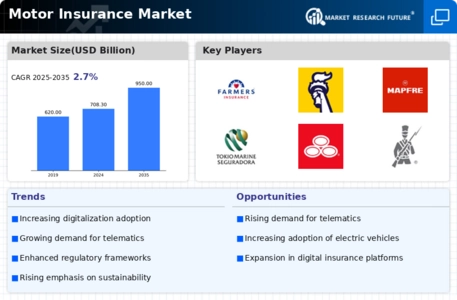
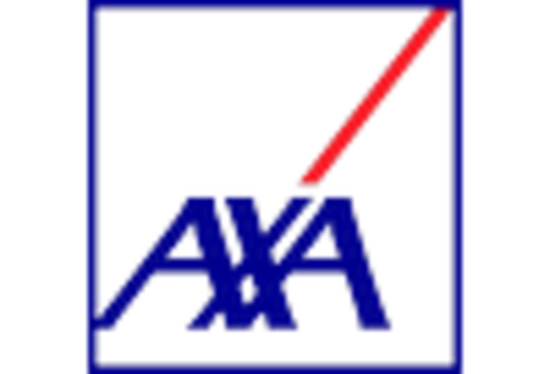
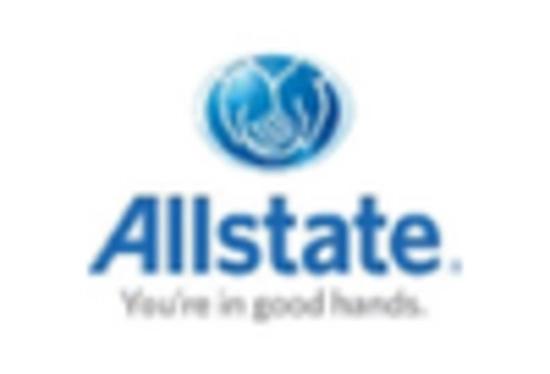
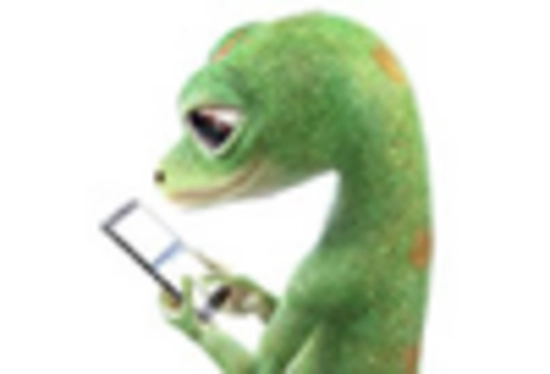
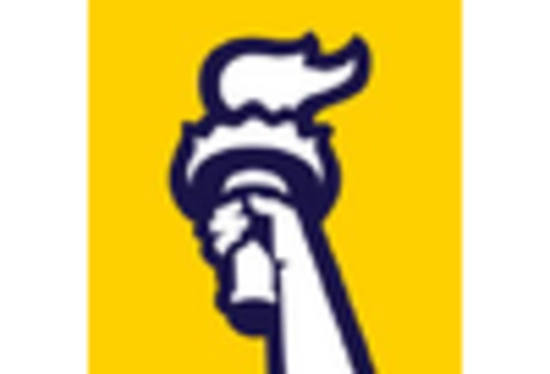
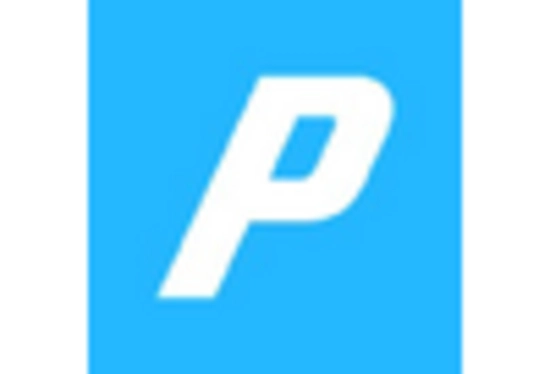
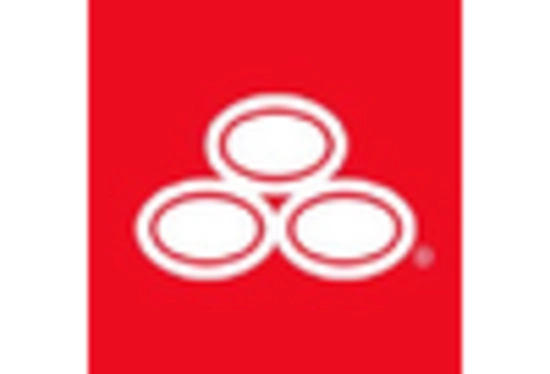

Leave a Comment